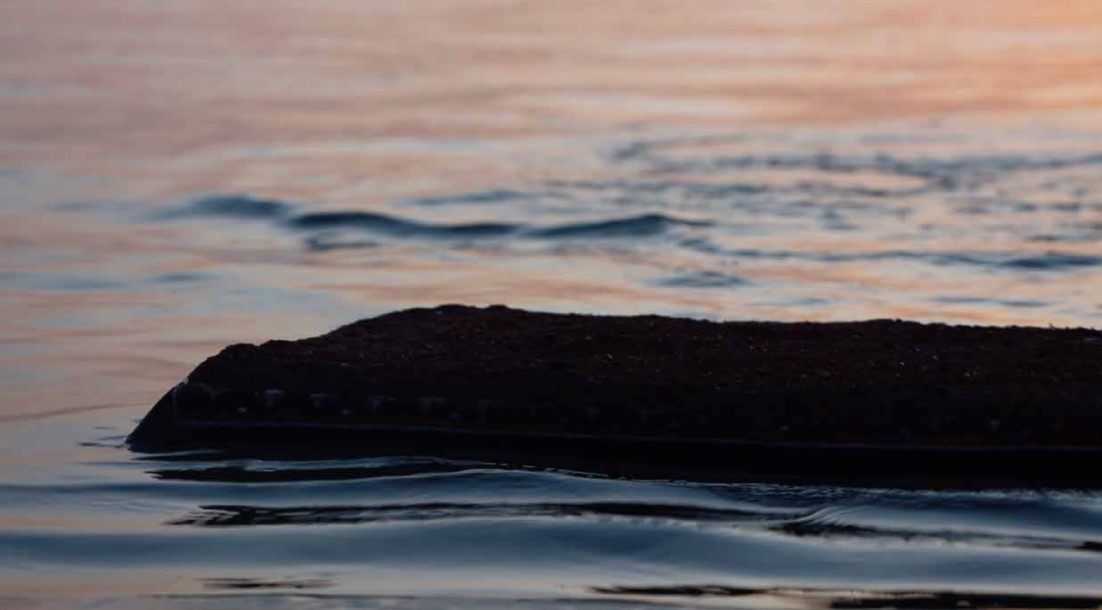Artists: Maria Giovanna Abbate, Annalisa Cannito, Liryc Dela Cruz, Adji Dieye, Derek MF Di Fabio, Grace Martella, Genny Petrotta, Sandra Rilletti, Noura Tafeche, Valerie Tameu
Our Rivers Share a Mouth gathers ten artists situated in Italy to reflect on the meaning of solidarity and sharing, across and with respect for differences in the plural and the singular. A rivermouth is where a river meets another, while the mouth is figured as the source of speech. Their juxtaposition speaks to the differential yet fluid relations that connect bodies with environments, sedimenting histories into archives, moving between lands, from rivers to seas, memories to emotions, and from the personal to the political.
In their diverse practices, the artists gathered in the exhibition deal with questions of collective memory, environmental justice, agentive bodies and community solidarity actions. Through re-membering, activating archives, and performing rituals of care and desire, the artists address ongoing legacies of imperialism and colonial infrastructures and how they mirror in multi-layered postcolonial realities. To face these realities entails reckoning with the ongoing destruction of lifeworlds and ecosystems through exploitation, extraction, and violence, affecting human and more-than-human conditions for life.
By suggesting imaginative ways to shift – to queer, to trans, to abolish, to repair, to affect – dominant narratives, artists contribute to an understanding of how local, global, social and personal struggles are interlinked across territorial borders and migrations of knowledge.
Annalisa Canito, in collaboration with activists from the Bormida Valley, reactivates the archive of one of the first rural environmental movements in Italy with a century long history of resistance against ACNA, a chemical factory. Continuing her research In the Belly of Fascism and Colonialism, she rethinks the historical past, the economic dynamics of exploitation and evidence of the intertwining of the local and the global issues.
Maria Giovanna Abbate’s multi-media installation encompasses collaborative works of several artists and associations around the Volturno river. Navigating individual and environmental situations marked by tensions, precarity, and fragility with psychogeography, Abbate’s work reflects on the role of art in creating transformation.
Through listening and performance, Sandra Rilletti asks the public how they connect with their bodies and environments, and the stresses they carry. The Mediterranean emerges through myths and tales as a space for sleep and regeneration beyond patriarchal language, where whales and dolphins suggest somatic knowledge for moving together through grief in a troubled present.
On white sheets of silk, Adji Dieye uses photographic materials selected from Senegal’s national archives and her personal archive, recalling what is missing between colonial realities and individual memories, questioning the formation, experience and representation of diaspora identities.
Noura Tafeche connects art and protests by reformulating how the aesthetics of celebration can reinvent ways of manifesting and inviting rebellion. In The Kawayoku Inception archiving and mapping the streams of images and data uploaded on social media, Tafeche adopts a critical view on how internet imaginaries delve into an obsession with the "cute" in order to normalize and sugarcoat contemporary war propaganda.
Touching on the recent industrial past and its movements of people with poetic attention to the ephemeral, Valerie Tameu traces how memories are made through personal and institutional archives. With I Miss You So Much, Tameu choreographs a collective re-membering of Black and working-class life and organising in 1980s Turin.
Derek MF Di Fabio’s artistic research practice is represented through one its many facets with a series of drawings. Spread through the space, they gesture toward queer and quantum feminist ways in which our senses and communities can accommodate plurality as well the unknown.
In the video work Kumeta, Genny Petrotta carefully tells the story of the peasant uprising of Repubblica Contadina that was founded in her home town Piana degli Albanesi in the 1940s. Artist takes care of the intergenerational transmission of trauma and the unforgotten past of violence lived with the Arbëreshë community.
Grace Martella’s photographic series brings in a disoriented narration that she experienced during adolescence. Reaching between the lyricism of Apulia’s landscapes and transfeminist perspectives on beauty, the works speak to a sublimated body that constantly changes, moves and leaves traces behind.
Liryc Dela Cruz’s video installation, II Mio Filippino: For Those Who Care to See, problematises the act of caretaking and questions the constructed identity posed on Filipino domestic care workers in Italy. By quietly bringing the invisible to the visible, the work unveils the question: can marginalised bodies truly rest?
On the occasion of the exhibition, a publication serves as an alternative space, an open rivermouth, for sharing and collecting materials. These include ongoing artistic researches, poetic writings, images relating to the artworks, personal documents, and further curatorial discussions, inviting the readers to negotiate their own understandings with encountered realities and connect thoughts beyond the physical exhibition space.
Our Rivers Share a Mouth is the final exhibition of the 18th edition of the Young Curators Residency Programme coordinated by Michele Bertolino











